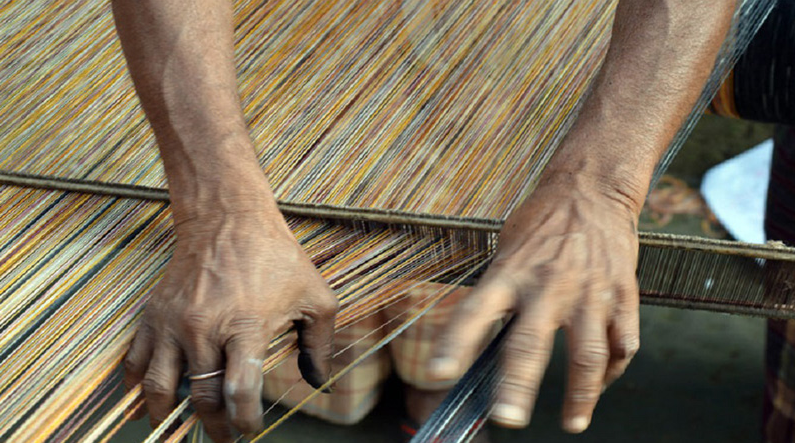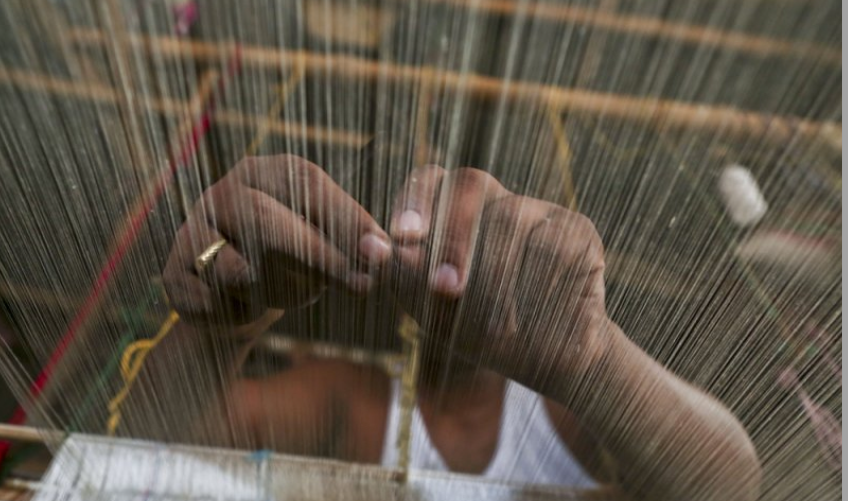Spinning khadi cloth is an ancient tradition in our culture. The significance of khadi attire has not diminished despite thousands of variants. On the contrary, its appeal to the people has returned to the weaving variety over time. Now, khadi is vibrant and distinct in its variety of designs. Khadi has consequently won the hearts of the youth. Particularly, the value of khadi cloth is increasing among the people in Bangladesh as the value of local fashion houses rises. Due to the rising demand of the populace, local fashion houses are focusing on the production of khadi garments and introducing new khadi garment designs to the market. Moreover, the value of khadi continues to rise among the large number of Bengalis dispersed throughout the developed world, including the Middle East, Europe, and the United States.
Khadi industry

This subcontinent is renowned throughout the world for its handloom weaving industry, which dates back to ancient times. In order to satisfy the needs of the nation, this woven cloth was almost always sold overseas. The people who worked in the weaving industry were known as “Yugi” or “Debnath” in the language spoken in that region.
Khadi yarn is woven on a spinning wheel
Due to the rapid demand for khadi, holes were drilled in the ground under the foot paddles for quick looming. The cloth produced from this hole or khadi is khadi. Thus the origin of the name Khadi. Gradually this cloth came to be known as khadi or khaddar.
The way Khadi of Comilla is known
According to historical accounts, during Gandhiji’s non-cooperation movement in British India in 1921, the khadi business swiftly spread and gained prominence. At that time, Rangamati cotton was used to create khadi fabric. Many Yugi or Debnath households resided in the district’s Chandina, Debidwar, Burichang, and Sadar police stations. Gandhiji’s appeal to boycott foreign textiles was widely embraced in Comilla, where khadi textile output also increased. As a result, the Khadi fabric of Comilla spread throughout the nation. This fabric is well-known as the khadi of Comilla.
Abhay Ashram
The Abhay Ashram in Comilla, founded by Gandhiji, played an important role in spreading the khadi industry. Abhay Ashram was established as a social welfare institution disguised as a sanctuary for the practice cycle. The call for a boycott of foreign clothes began when spinning began at a massive rate. So Abhay Ashram started selling khadi cloth in addition to selling it in the spinning wheel made in Solve Ashram. Khadi garments made in different villages also started being marketed through Abhay Ashram.
The then price of khadi cloth
In 1926-27, it was common knowledge that an 8-foot-long dhoti cost merely five cents. Comilla Abhay Ashram sold khadi fabric valued at approximately 9 lakh rupees. But, according to the writings of Parimal Dutta, a late Rabindra Sangeet scholar and Abhay Ashram campaigner, Abhay Ashram did not meet all of the demands, even though it was substantial.
The state of the khadi industry after independence
The post-independence period was the golden age of the khadi industry. However, a crisis comes immediately after this. The war-torn textile mills were then closed. In order to meet the demand for textiles, there is a lot of pressure on handloom textiles in import-dependent countries. Although the production of khadi is not more than the country’s demand or the people’s, weavers in the surrounding villages around Chandina Bazar started making sheets, curtains and cloths.
Before independence, khadi was also in demand as a winter garment. However, in the wake of the market for khadi cloth, some unscrupulous people in the region have looted their profits by taking licenses of yarn and dyes given to them by the past government as middlemen. As a result, the real weavers were forced to stop weaving due to a lack of cheap yarn and dye.
Khadi’s current condition
The Khadi industry is closely intertwined with the Comilla district. At one time, this khadi was very popular. Earlier, this khadi was made in Gandhi Sanctuary in Comilla. Gandhiji’s memory is still a loom in Chandina Upazila of Comilla city. At present, Khadi Cottages, Purbasha Gift & Khadi, Khadi House, Khadi Arang, Grameen Khadi, etc. are notable among the khadi products of Comilla.
Export of ‘Grameen Khadi’
Speaking to Arun Guhar, proprietor of Grameen Khadi in Chandina, Comilla district, it is learned that at present, there is not enough demand for khadi cloth. Still, small khadi products are being exported in the country and abroad. These products are exported to several countries, including France, Spain, Denmark, and Turkey. Although this industry survives, there is considerable concern about its existence shortly. The reasons for this, he said, were the inadequacy of cotton and limited demand. At present, it is not possible to produce by handloom with the help of a machine. He said that to sustain this industry in the future, everyone needs to buy khadi or khaddar clothes at least once a year.
The concerned people also think that it is possible to solve this problem if the government and various NGOs come forward under their patronage.

